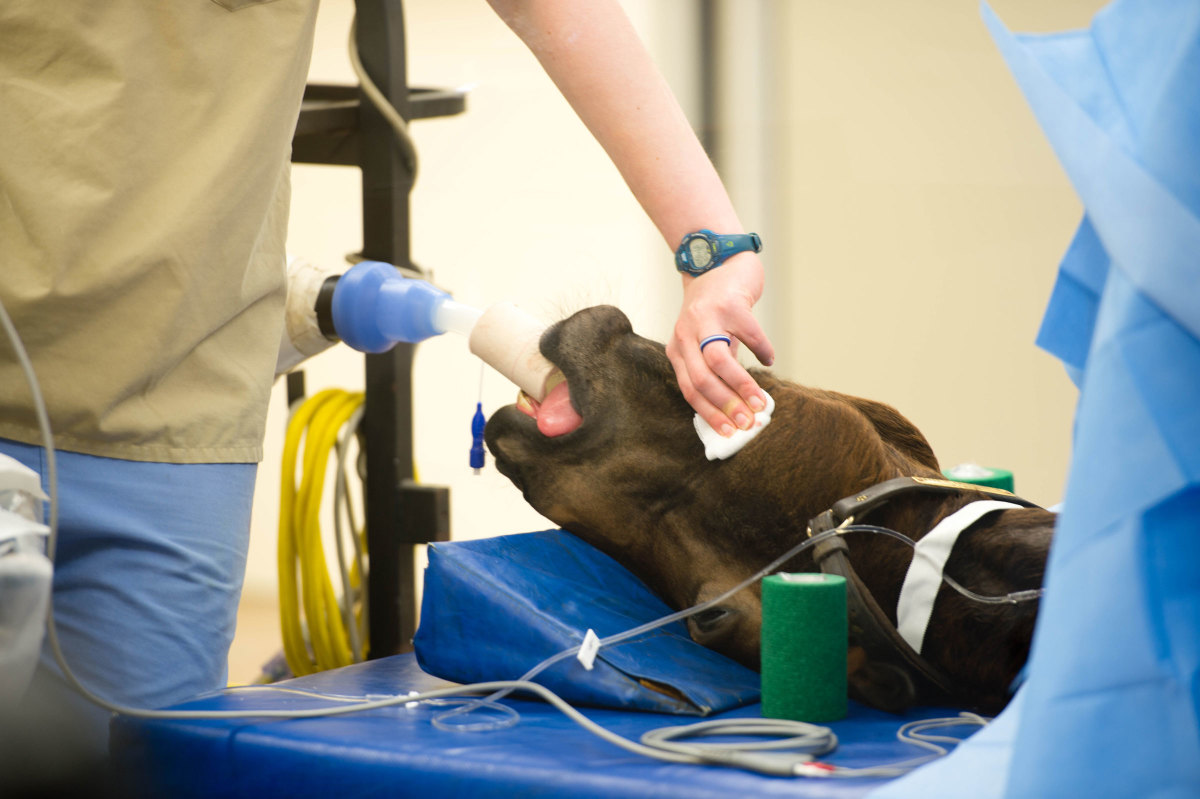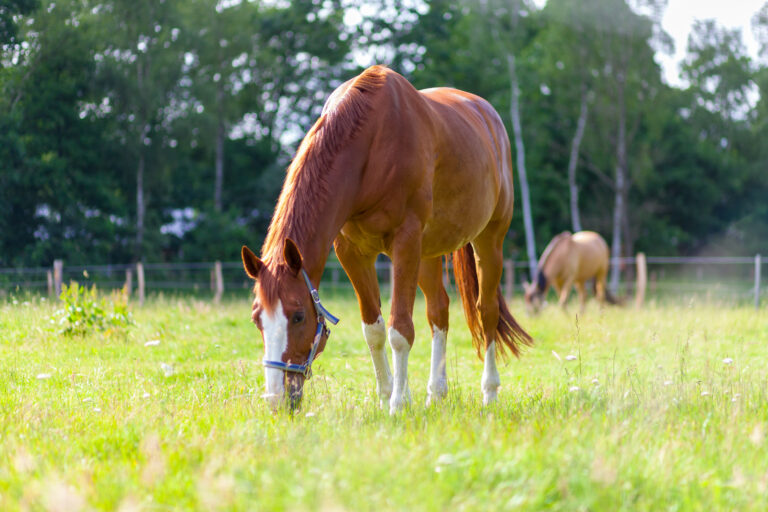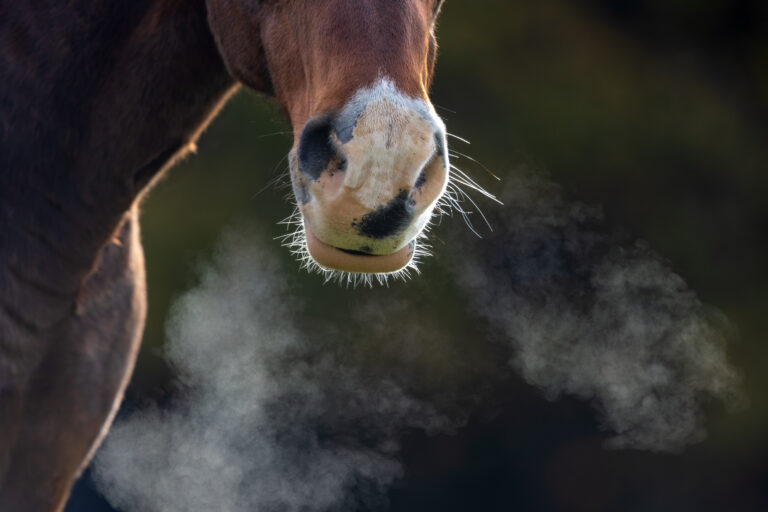
This prospective study investigated changes in arterial oxygen tension (PaO) in horses during recovery from general anesthesia. This article was authored by Bardell, D., Mosing, M., Cripps, P.J. of the University of Liverpool in the United Kingdom.
In total, 102 systemically healthy horses undergoing general anesthesia for elective surgery were included in the study. Arterial blood samples were obtained prior to administration of pre‐anesthetic medication (baseline), at the end of anesthesia, when placed in recovery, at 10 minute intervals while in lateral recumbency, immediately upon achieving sternal recumbency, at 10 minute intervals until standing and 1 hour after standing (STAND+1).
Pre‐anesthetic medication consisted of acepromazine, an alpha-2 adrenoreceptor agonist and a µ‐receptor agonist opioid. Induction was achieved with thiopental or ketamine plus a benzodiazepine, and anesthesia was maintained with isoflurane or sevoflurane. Forty horses received controlled mandatory ventilation (CMV) throughout anesthesia, 47 breathed spontaneously (SV) and 15 breathed spontaneously before CMV was commenced (S‐CMV).
Overall, PaO alveolar‐to‐arterial oxygen tension difference (P(A‐a)O) and arterial carbon dioxide tension (PaCO) remained significantly lower than baseline at the STAND+1 time point. The only group in which these values had returned to baseline values at STAND+1 was S‐CMV. CMV resulted in higher PaO at the end of anesthesia and during early recovery than SV. Highest PaO values associated with CMV were also associated with early recovery apnea. Oxygen supplementation in recovery resulted in higher mean PaO than in horses receiving no additional oxygen. High PaO values did not appear to adversely affect outcome.
Bottom line: Controlled mandatory ventilation during general anesthesia may result in better pulmonary function in horses.
For access to this article from Wiley online library click here.









